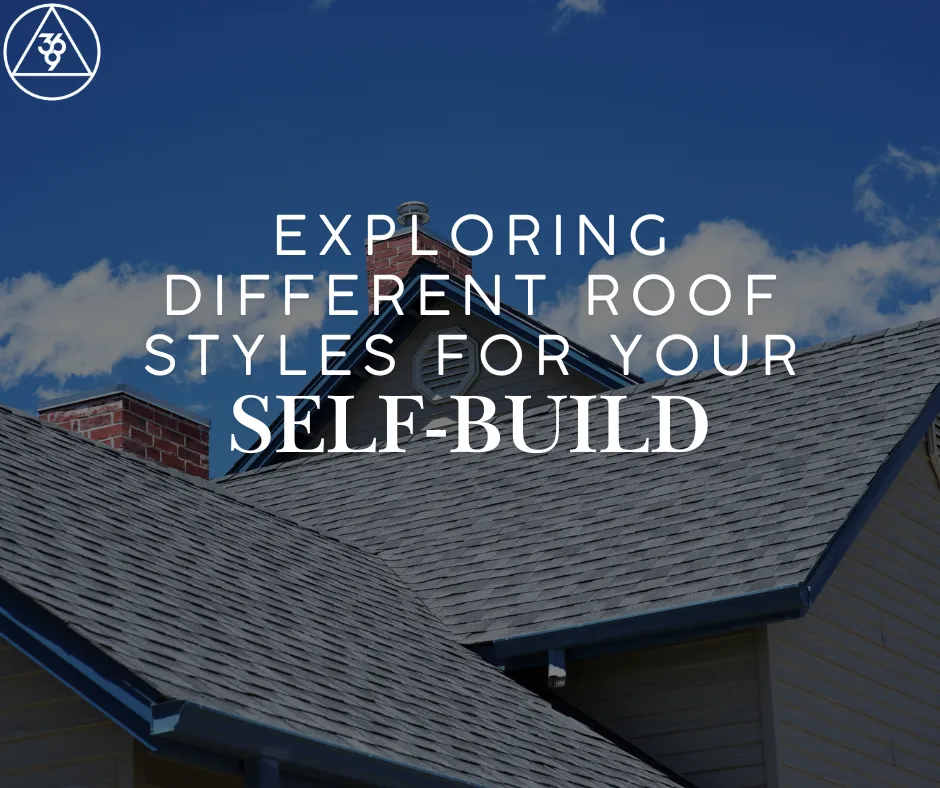
Exploring Different Roof Styles for Your Self-Build
Exploring Different Roof Styles for Your Self-Build
The roof of your home does more than just keep out the rain—it shapes the way your house looks, feels, and even performs. Choosing the right roof style for your self-build is a big decision, and with so many options, it’s important to find one that suits your design, budget, and location.
Let’s explore the most popular roof styles for self-builds, their benefits, and how to choose the perfect one for your dream home.
Why Is the Roof Style Important?
The roof is one of the most visible parts of your home and plays a crucial role in:
Appearance: It defines the look of your home, from traditional to modern.
Functionality: It protects your home from the elements and impacts energy efficiency.
Budget: Some roof styles are more expensive to build or maintain.
Local Fit: The style should match your area’s climate and planning rules.

Popular Roof Styles for Self-Builds
Here are some of the most common roof styles to consider:
1. Pitched Roof
A pitched roof is a classic style with two sloping sides that meet at a ridge. It’s one of the most common roof types in the UK.
Benefits:
Ideal for rainy climates as water drains easily.
Provides space for loft conversions or insulation.
Timeless appearance that fits most designs.
Considerations:
Can be more expensive than flat roofs due to additional materials and labour.
2. Flat Roof
As the name suggests, flat roofs are nearly level, with a slight slope for drainage. They’re often used in modern designs.
Benefits:
Minimalist and contemporary look.
Cheaper to build initially.
Can be used as a terrace or green roof.
Considerations:
May require more maintenance to prevent leaks.
Less effective in heavy rain or snow.
3. Gable Roof
A gable roof is similar to a pitched roof but with steeper slopes. It creates a triangular shape at each end.
Benefits:
Excellent for shedding water and snow.
Simple design makes it cost-effective.
Adds height and space for an attic or loft.
Considerations:
Vulnerable to wind damage in exposed areas.
4. Hip Roof
A hip roof slopes on all four sides, making it sturdier than a gable roof.
Benefits:
Great stability, especially in windy or coastal areas.
Attractive, symmetrical appearance.
Better shade and ventilation options.
Considerations:
More complex design increases cost.
5. Mansard Roof
This French-inspired roof has two slopes on each side, with the lower slope steeper than the upper.
Benefits:
Maximises living space with a full upper floor.
Adds character and elegance to your home.
Considerations:
Expensive to construct due to its complexity.
6. Dormer Roof
A dormer roof includes small, vertical extensions (dormers) with windows, often added to a pitched roof.
Benefits:
Adds natural light and extra space to the upper floor.
Enhances curb appeal.
Considerations:
Adds cost and requires careful planning for insulation.
7. Green Roof
A green roof is covered in vegetation, offering an eco-friendly option.
Benefits:
Excellent insulation and energy efficiency.
Reduces rainwater runoff.
Supports biodiversity.
Considerations:
Requires strong structural support and regular maintenance.
How to Choose the Right Roof Style
Here are some factors to consider when selecting a roof for your self-build:
1. Climate
Rainy Areas: Choose pitched or gable roofs for effective drainage.
Windy Areas: Opt for hip roofs or low-profile designs to resist wind.
2. Budget
Pitched and hip roofs are pricier due to materials and labour.
Flat roofs and gable roofs are more cost-effective for tight budgets.
3. Aesthetics
Traditional designs suit pitched, gable, or hip roofs.
Modern builds often feature flat or green roofs.
4. Functionality
Consider if you need attic space or natural light.
Think about maintenance and long-term durability.
5. Planning Permission
Check with your local planning authority to ensure your chosen roof style complies with regulations.

Common Mistakes to Avoid
Ignoring Maintenance Costs: Flat roofs, for example, may need more upkeep.
Not Considering Local Climate: Choose a style that fits your area’s weather.
Overlooking Energy Efficiency: The right roof can reduce heating and cooling costs.
How We Can Help
At 369 CUG’s Self-Build Academy, we assist self-builders in choosing the perfect roof style for their home. From understanding costs to working with architects and builders, we ensure your roof complements your design and meets your needs.
Top Off Your Dream Home
Your roof is more than just a shelter—it’s a key part of your home’s design, functionality, and energy efficiency. By choosing the right roof style and planning carefully, you can create a home that’s beautiful, practical, and built to last.
Need advice on roof styles? Visit the Self-Build Mastery on our website for expert guidance and resources to help you every step of the way.
